Created for Tank Day in May 2023, the Tanks @ OMM handout (mirrored text below) includes fun facts for the tank novice, the young, and young at heart with details about each of the tanks and tracked vehicles part of the outdoor display in the Museum’s Historic Park, as well as the two tanks on display outside the neighboring AFRC building.
TANKS @ OMM
What Makes a Tank?
Tanks are armored tracked vehicles used in combat, armed with guns to fight other tanks, and also able to support infantry.
Abrams M1
The 1500HP M1 started with a 105mm gun but increased to 120mm by the 1990s and continues to hold a M2 .50 caliber (in Tank Command position) and two 7.62mm M240 guns (one in Loader position, one mounted in sync with the 105mm gun).
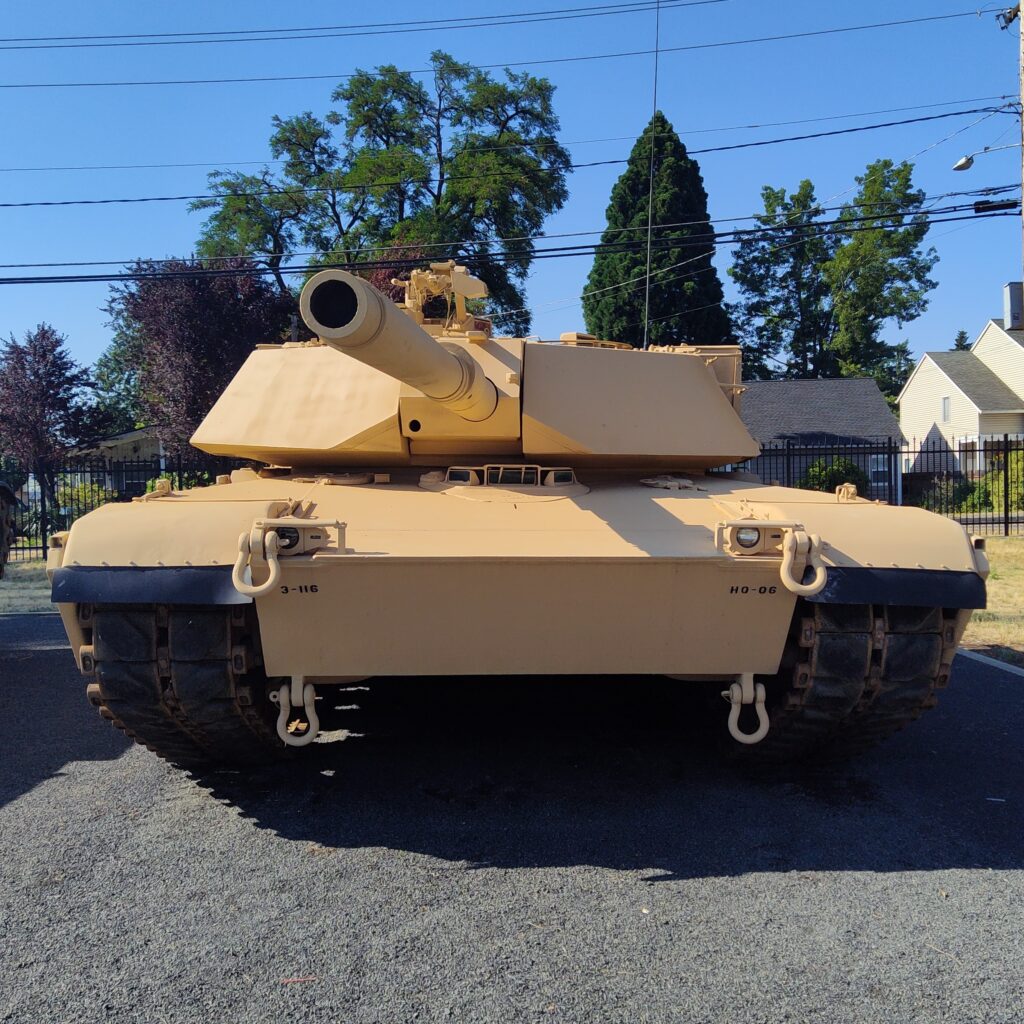
Tech Jump: Electronic computers replaced mechanical computers with the M1, providing wind speed, barometric, and temperature measurements, allowing for laser tracking to identify and lineup a target for a 1st shot hit, rather than adjusting for a 2nd shot hit.
Patton M60A3
M60A3s brought tanks into the computer age with many engineering advancements.
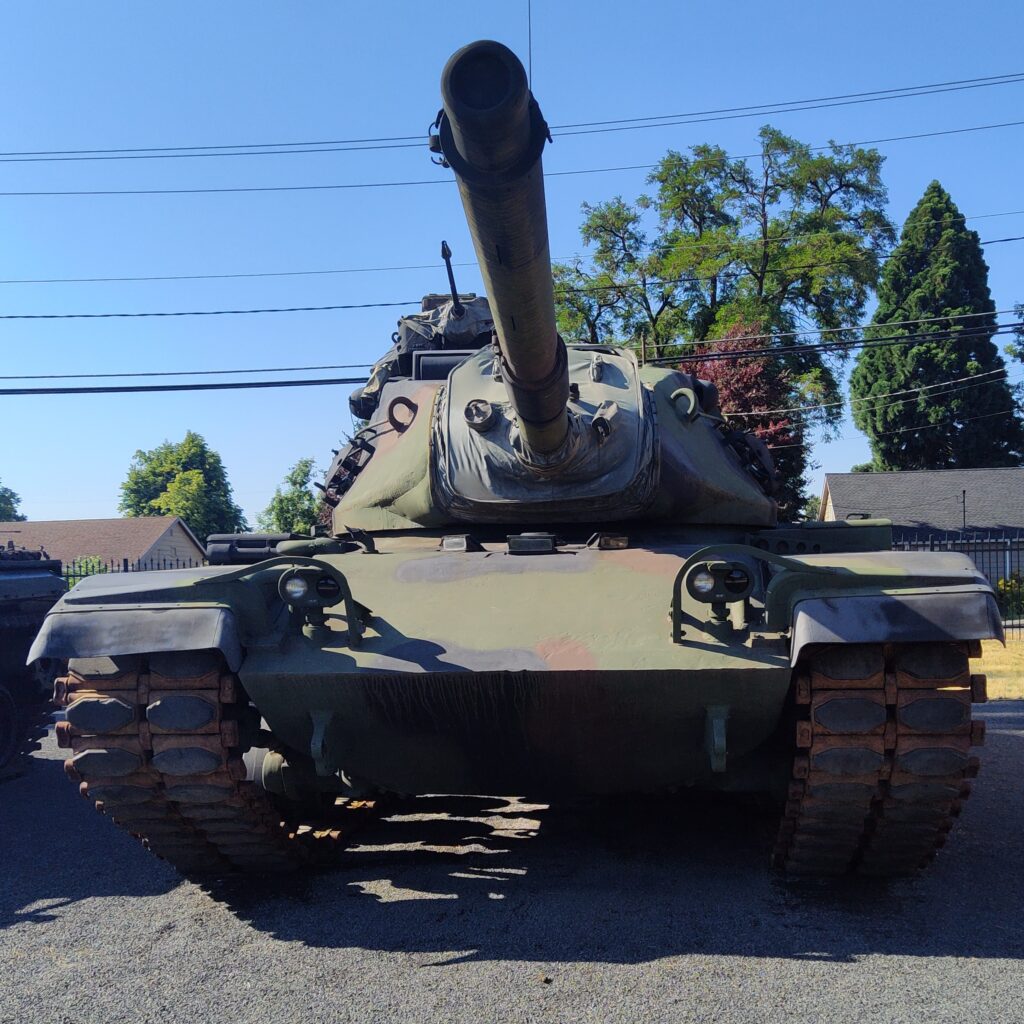
Tech Jump: The M60A3 introduced neutral steering (1 track goes forward, 1 goes in reverse), allowing for left/right turn steering. On the earlier versions, one track would lock allowing the tank to spin to a new direction and then unlock to drive straight forward.
Sherman M4A*
The WW2 “Medium Tank” merged “Light” mobility and “Heavy” armored qualities.
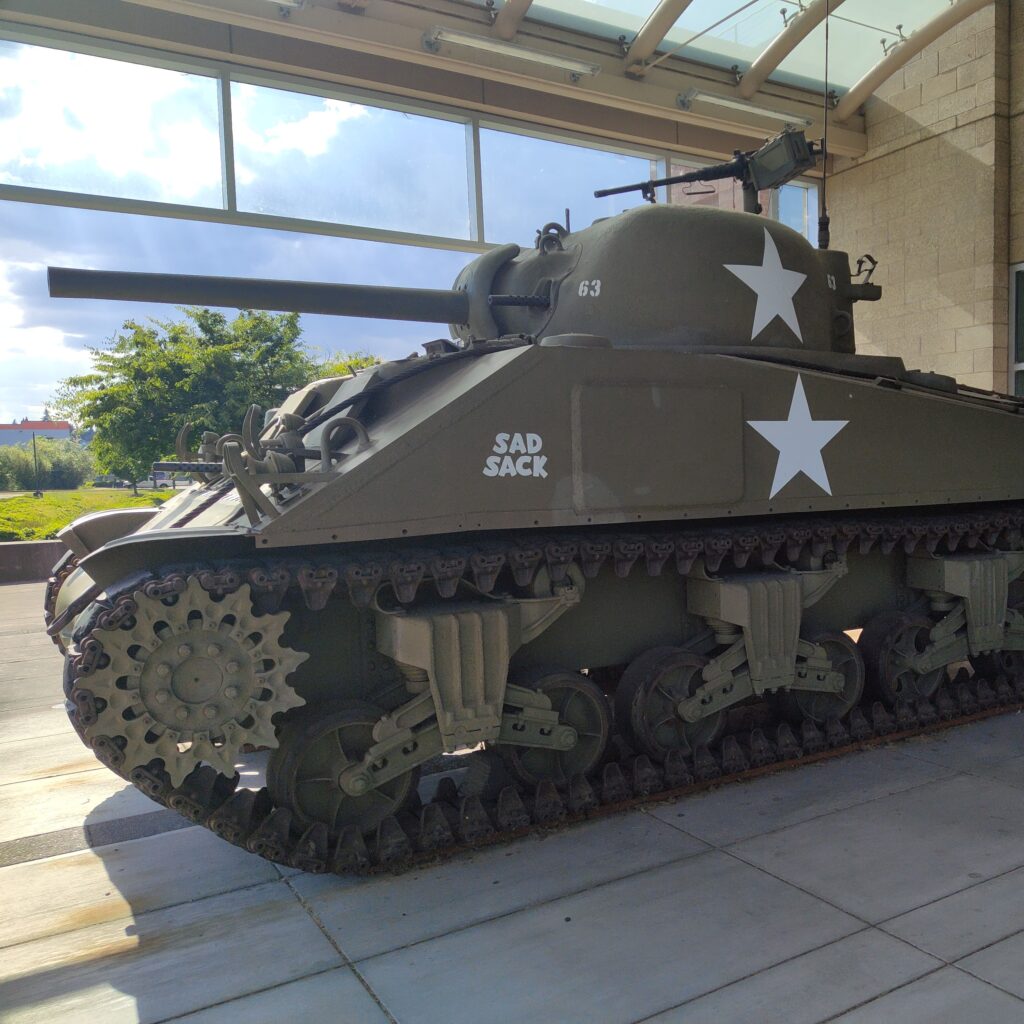
Light Tanks
Primarily used for reconnaissance or gunnery in response to infantry and fortifications, not other tanks.
Bulldog M41A3
The M41A3 introduced the fuel injection engine, hydraulic traverse system, and infrared vision.
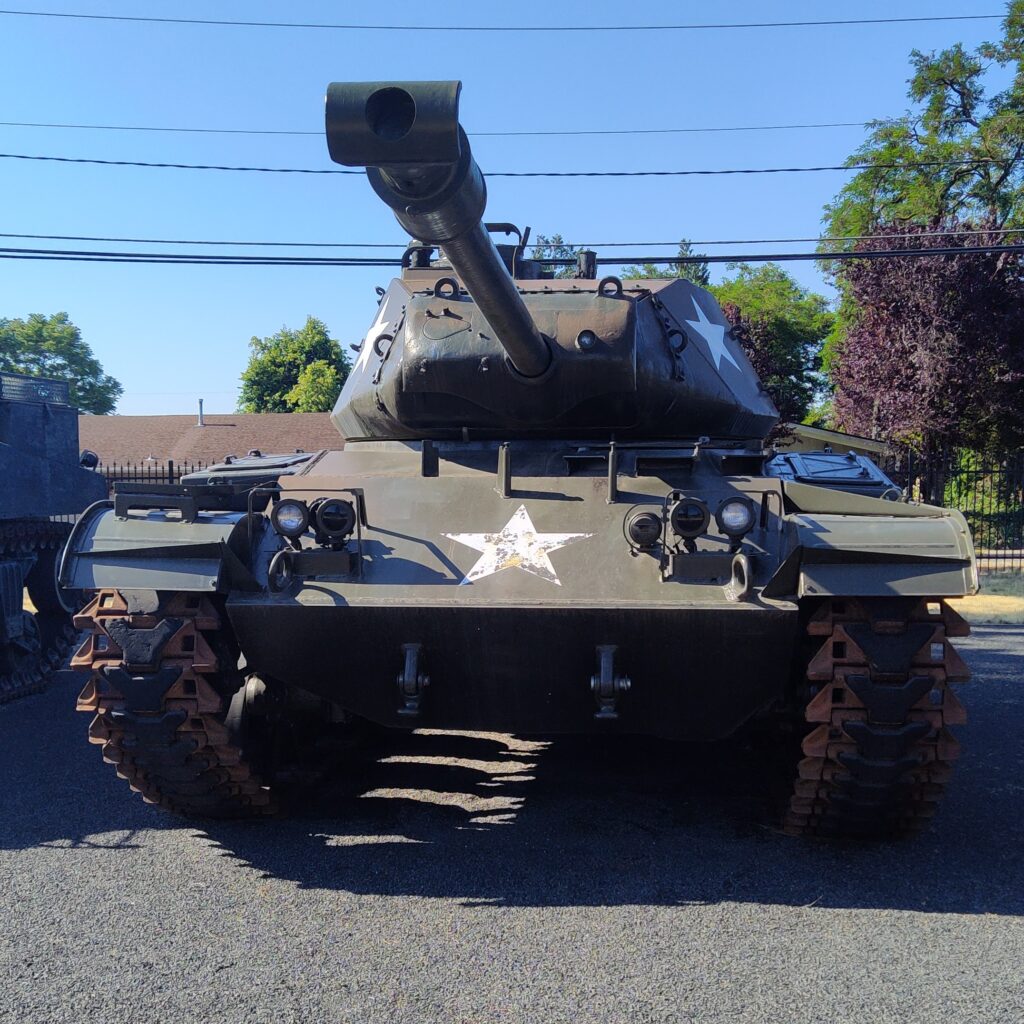
Ha-Go Type 95*
The Japanese Ha-Go T-95 was designed for infantry support but also engaged in tank vs. tank combat.

Self-Propelled Artillery
Previously, artillery was trailered by horse or a separate motorized vehicle but with the evolution of engine vehicles, artillery was motorized, allowing it to “self-propel” as part of a motorized vehicle.
Priest M7B1
The M7B1 transitioned from half track/half wheels to a fully tracked vehicle with attached artillery.

Duster M42A1
Anti-Aircraft M42A1 used visual lineup — radar would come later — to fire upon enemy aircraft.
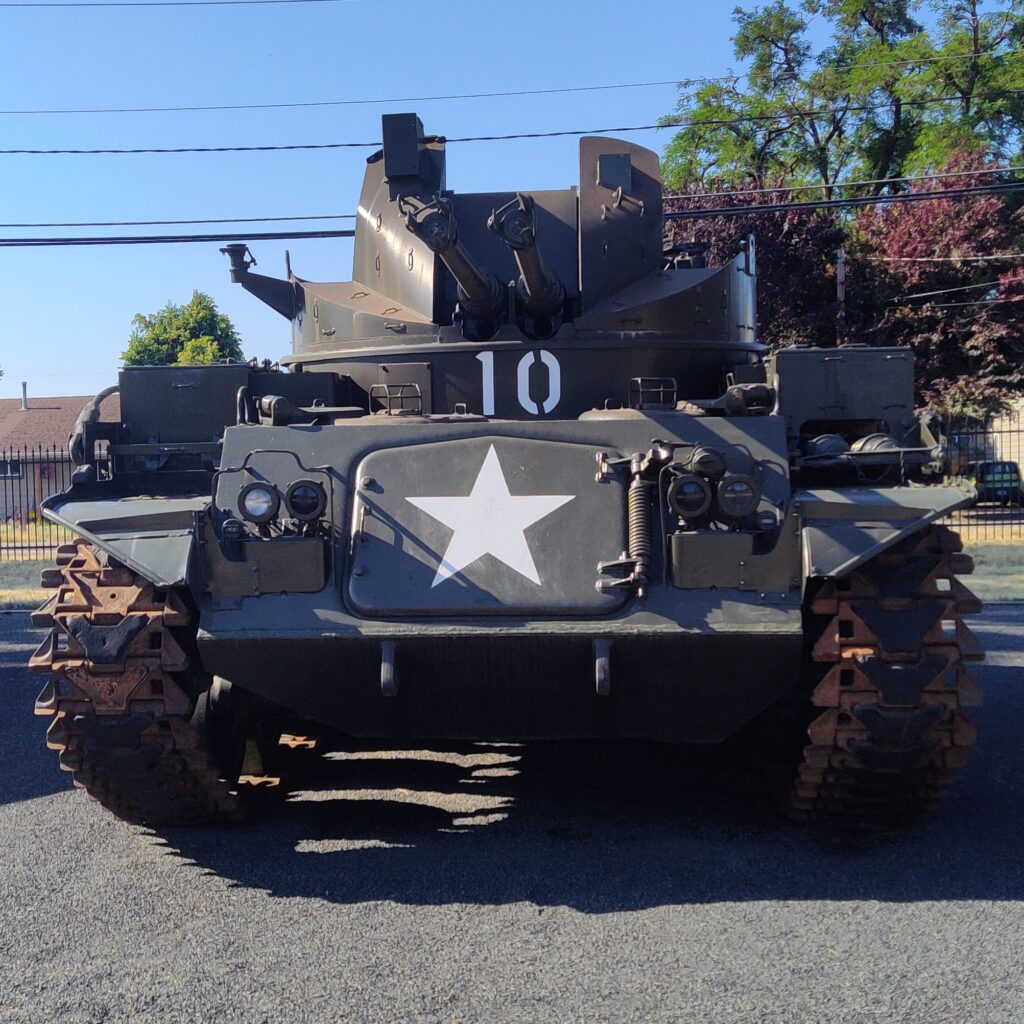
Who Does What?
The Tank Commander assesses target needs including where and what. The Loader loads the guns based on these in order for the Gunner to aim the shot accurately. A separate driver and additional crew may be added depending on model.
* Found at the AFRC entrance. The AFRC is a quick walk from the Museum; both are at Camp Withycombe.

